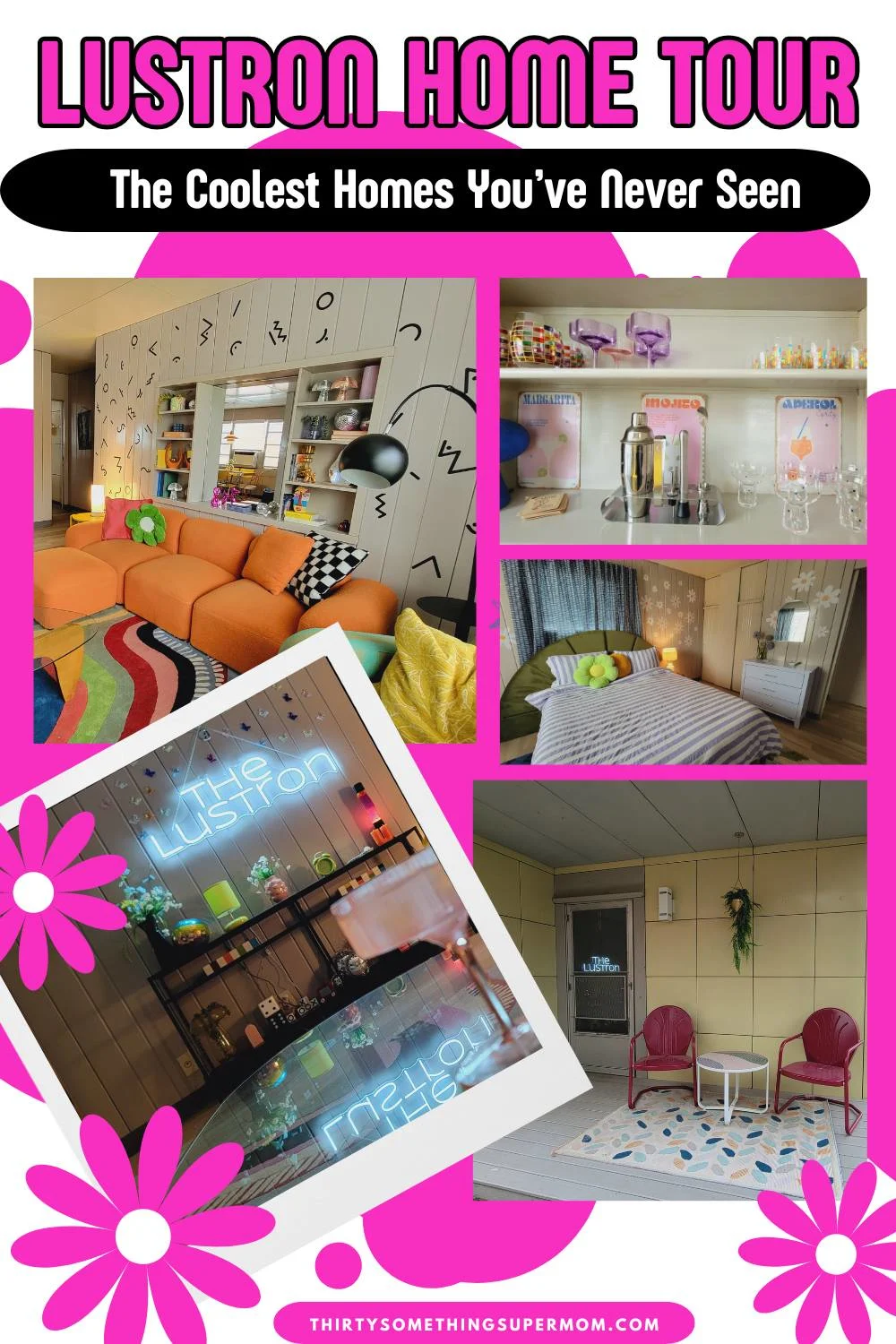Ever heard of Lustron homes? If not, prepare to be intrigued! These innovative, all-steel houses from the mid-century era are a testament to American ingenuity, and I recently had the chance to step inside one in Des Moines, Iowa.
Have you ever driven past a house and thought, “Whoa, that’s different!” That was exactly my reaction while cruising down Beaver Avenue in Des Moines, Iowa. What stood out? A Lustron home—a rare, mid-century marvel made entirely of steel. These aren’t your typical wood-frame houses. They’re pieces of American architectural history, designed to solve the post-war housing crisis with innovation and efficiency.
Lustron homes were built to be durable, low-maintenance, and futuristic—constructed from porcelain-enameled steel panels inside and out. Their sleek, modern style turns heads even decades later.
I recently visited one of these incredible properties at 1703 Beaver Ave, Des Moines, IA 50310, which sits right next to another Lustron house—giving this block a unique place in the story of metal prefab homes. In this post, I’m sharing video footage, photos, and fascinating facts that explain what makes a Lustron house not just a home, but a brilliant example of mid-century innovation.

What Are Lustron Homes?
Lustron homes were created in the late 1940s as a solution to the severe housing shortage following World War II. Soldiers returning home needed affordable, low-maintenance places to live, and Lustron Corporation stepped in with a radical idea: build entire homes out of porcelain-enameled steel panels.
Yes, that means the walls, roof, and even interior features were made from steel. These homes were essentially giant Lego sets, assembled piece-by-piece from prefabricated panels in a factory and then shipped to their final destination for construction.
The Vision Behind the Lustron House
The Lustron steel home was the brainchild of Carl Strandlund, who saw potential in using industrial manufacturing techniques to address America’s housing crisis. His company aimed to mass-produce homes just like cars, using steel and enamel to create dwellings that would last a lifetime with minimal upkeep.
The result? Around 2,500 Lustron homes were built between 1948 and 1950. While the company eventually closed due to financial and logistical challenges, its homes have endured as iconic examples of mid-century modern innovation.

Unique Features of Lustron Steel Homes
What makes a Lustron house so unique? Here are some key features that distinguish them from traditional wood-frame homes:
- Steel Construction: The walls, ceilings, roof, and even some furniture pieces were made of porcelain-enameled steel, making these homes virtually maintenance-free.
- Built-in Storage: Many homes included metal cabinetry and shelving that were built right into the structure.
- Radiant Ceiling Heat: Instead of floor heating, many models featured radiant heating panels in the ceiling.
- Sliding Pocket Doors: These space-saving doors were standard in most Lustron homes.
- Pastel Color Options: The homes came in soft hues like dove gray, maize yellow, surf blue, and desert tan—true mid-century modern colors.

A Closer Look: 1703 Beaver Ave, Des Moines, Iowa
The Lustron home at 1703 Beaver Ave is a well-preserved example of a metal prefab home from the 1950s. Built in 1949, this Westchester Deluxe model features:
- Two bedrooms and one bathroom
- 1,021 square feet of living space
- Original porcelain-enameled steel panels still intact
- Matching Lustron home located next door
What makes this location especially fascinating is the way it transports you back in time. You can imagine the excitement of a family moving into one of the most cutting-edge homes of the 20th century. These were known as “fallout houses” for their durability and non-flammable materials—especially valuable during the Cold War era.

Why Lustron Homes Still Matter
Even though production ended in 1950, Lustron homes still capture the imagination of architects, preservationists, and history buffs alike. Their story reflects a unique moment in American history—when creativity, industrial innovation, and practicality came together to solve a national problem.
Today, it’s estimated that around 2,000 Lustron homes remain across the U.S., many lovingly restored by homeowners who appreciate their architectural value and quirky charm. They’ve become an unexpected treasure of the mid-century modern era.

Exploring the Different Lustron House Styles
The ingenuity of the Lustron Corporation extended beyond just building with steel; they also offered a range of designs to suit different needs.
The most common model you’ll likely encounter is the Westchester, which came in both two and three-bedroom layouts, with an even swankier “Deluxe” option available.
For those seeking a more streamlined approach, there was the Newport, also offered in multiple bedroom configurations.
The Meadowbrook provided another choice, leaning towards a slightly larger footprint. And it’s fascinating to note that there was even a prototype model called the Esquire, showcasing the evolution of their design thinking.

Visit a Lustron Home in Des Moines
Whether you’re an architecture enthusiast or simply love discovering unusual homes, the Lustron house at 1703 Beaver Ave is worth a visit (even if just virtually through the YouTube video going live on my channel this week and photos included in this post). Its steel walls and retro design details are unlike anything you’ll find in today’s housing market.
This home—and its twin next door—represent a chapter of American history that’s all too easy to overlook. But once you learn about Lustron homes, you’ll start to spot them and appreciate the forward-thinking design that helped define a generation of housing.
Are Lustron homes still being manufactured today?
The assembly lines that once produced these all-steel dwellings fell silent in 1950. This was largely due to financial headwinds the pioneering company faced in repaying its initial government funding. However, the legacy of their innovative approach lives on through the more than two thousand such residences that were built and continue to serve as homes for many today.
What sets a Lustron house apart from other types of homes?
Emerging from a period of post-World War II ingenuity and demand, Lustron homes presented a truly distinctive housing solution. Their defining characteristic was their construction primarily from prefabricated, porcelain-enameled steel components. Essentially, these houses were crafted off-site from enameled steel pieces and then transported for final assembly on the homeowner’s land.

How were Lustron homes protected from the elements and kept comfortable?
A non-combustible material designed for insulation was integrated throughout the structure of a Lustron home. This careful layering provided effective thermal regulation for diverse climates, helping to retain warmth during colder months and maintain a cooler interior when it was hot outside. Interestingly, the steel framework also offered a unique form of natural grounding.
How many square feet is a Lustron house?
These innovative dwellings, brought to life with the support of the Reconstruction Finance Corporation, were conceived to address the housing needs of a nation. The Lustron Corporation, a name cleverly hinting at the “luster on steel” that defined their construction, offered a selection of four distinct models. Each of these designs prioritized efficient use of space, resulting in homes that ranged in size from a cozy 713 square feet to a more spacious, yet still modest, 1209 square feet.
How were Lustron homes insulated?
Throughout the entirety of a Lustron home’s structure, a non-combustible material engineered for thermal regulation was employed. This thoughtful inclusion ensured comfortable living in diverse weather conditions, effectively retaining warmth during the chill of winter and promoting a cooler atmosphere in the heat of summer.
In which geographic areas can one find Lustron homes?
While their production was relatively short-lived, Lustron homes were distributed across a number of states. Some states with notable surviving examples include Alabama, Arkansas, Florida, Georgia, Illinois, Indiana, Iowa, and Kansas, among others. Their presence can be found in various locations throughout the American landscape.

How are Lustron homes heated?
The climate control system within a Lustron home presented a departure from conventional methods. While a standard furnace was typically part of the setup, the distribution of heated or cooled air was achieved in an unconventional manner. Rather than relying on a network of ducts, the area situated between the ceiling of the living spaces and the attic above served as a specialized air chamber. Within this cavity, air circulated and radiated its warmth or coolness directly into the rooms below.
What led to the cessation of the Lustron Corporation’s operations?
The vision behind Lustron required significant initial backing, which the company secured from government sources. However, this crucial support eventually waned, culminating in the Reconstruction Finance Corporation’s foreclosure on their loans in 1950. This financial setback brought the Lustron Corporation to an end, a challenge from which its founder, Carl Strandlund, did not recover.
More Iowa Hidden Gems
- Cantril Iowa – Things to Do
- Things to Do In Anamosa Iowa in 2025
- Kalona, Iowa: Top Things to Do in Amish Country
- Villisca Ax Murder House
About Thirty Something Super Mom

My journey started after a Crohn's disease diagnosis, inspiring a commitment to well-being. This site shares my distinctive approach to healthy living with my collection of nutritious recipes that boast authentic flavors, mimicking the indulgence of traditional dishes. I love sharing guilt free recipes for low carb, keto, gluten-free, paleo, and the specific carbohydrate diet. I also share tips on natural living, including homemade cleaners and cleaning hacks. I also share my experience as a veterinary technician and pet groomer, to integrate pet health tips, homemade dog food recipes, and grooming insights to ensure your pets thrive.

Jason Beeching
Friday 18th of April 2025
This post was a pleasure to read, thank you.
Melissa
Tuesday 29th of April 2025
Thank you for stopping by, reading, and commenting Jason! I'm glad you enjoyed this post.